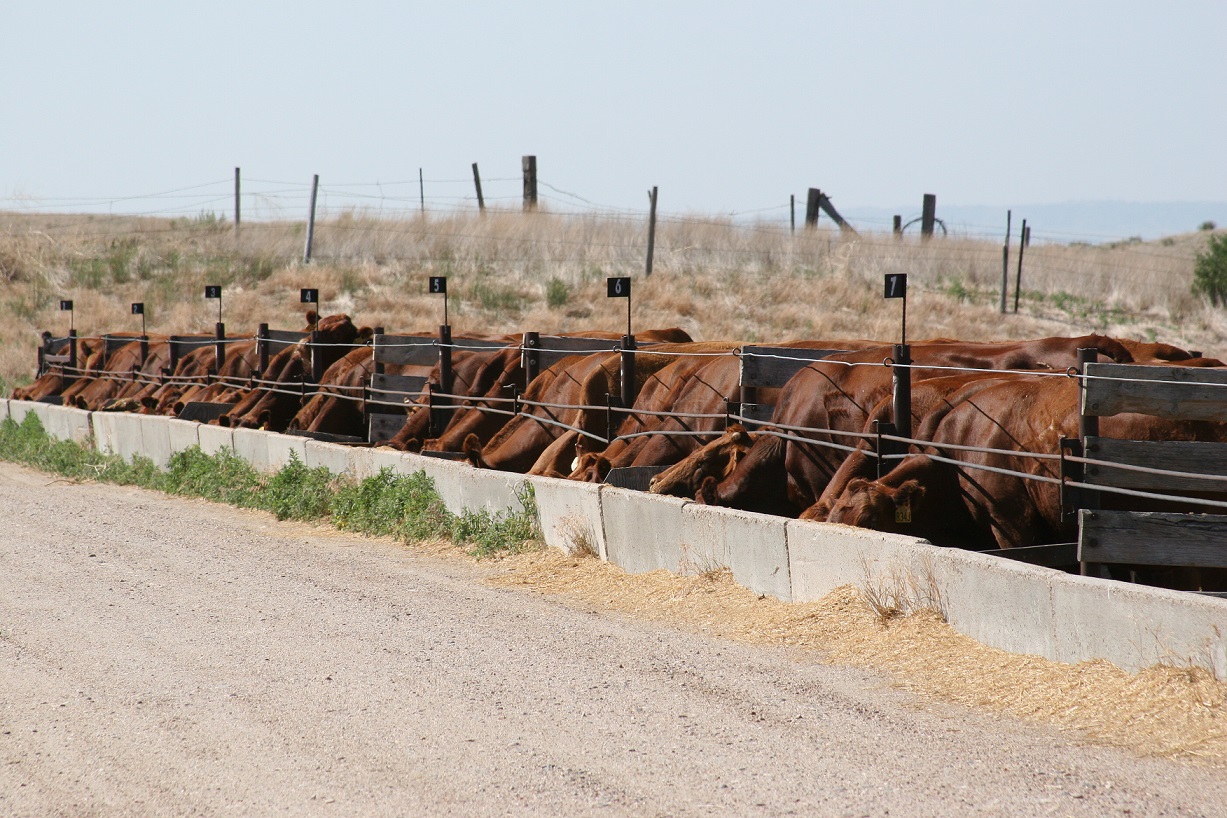
By Karla H. Jenkins, UNL Cow/Calf Specialist
With increasing areas of Nebraska being hit with drought, the Nebraska Department of Agriculture has released Conservation Reserve Program (CRP) grasslands to be used for hay. All hay intended for cattle rations, including CRP hay, should be tested for nutrient quality so a balanced diet can be formulated for the cattle. However, CRP hay is typically very low quality (< 50% total digestible nutrients; TDN, and <8% crude protein; CP) and not very palatable. With forage supplies tight, and hay prices likely to increase, producers will want to feed CRP hay in a way that results in the most consumption.
Grinding CRP hay, mixing it with wet distillers grains, and limit feeding it to cows or pairs in confinement can be a good way to utilize poor quality forage such as CRP while maintaining body condition and weight gain on the calves. Mixing equal amounts of the distillers and CRP hay on an as is or as fed basis is about the minimum amount of distillers needed to get the cows to clean up the ground hay effectively. Producers interested in developing a diet to maintain confined cows or pairs using CRP hay should contact their local extension personnel for ration formulation assistance, especially if limit feeding is desired. For more information on managing cows in confinement see NebGuide G2237 Management Considerations for Beef Cows http://extensionpublications.unl.edu/assets/pdf/g2237.pdf.
Another option for producers who cannot place cows or pairs in confinement would be to use a mixture of CRP and distillers grains for partial replacement of grazed forage intake. Research at the University of Nebraska has indicated a mixture of straw or poor quality hay and wet distillers grains can be fed to cattle out on pasture to replace grazed forage. However, this research indicated that the replacement was only 22% of the grazed forage. Therefore, if cattle are left on the pasture, producers should not expect a 1:1 replacement value for dry matter intake or the pastures will suffer overgrazing. For assistance calculating grazed forage intake and the amount of the CRP and wet distillers grains to feed producers should check with local extension personnel. More information on using poor quality hay and distillers to replace grazed forage visit NebGuide 2099 Crop Residues or Low Quality Hay Combined with Byproducts as a Forage Substitute http://extensionpublications.unl.edu/assets/pdf/g2099.pdf.
Other available byproducts, such as sugar beets, beet pulp, and wet corn gluten feed can also be included in a mixture with CRP hay to increase energy value and consumption. However, some byproducts are low in protein so getting assistance with ration balancing is critical for maintaining production on cows and calves.
To listen to BeefWatch podcasts go to: https://itunes.apple.com/us/podcast/unl-beefwatch/id964198047 or paste http://feeds.feedburner.com/unlbeefwatch into your podcast app.